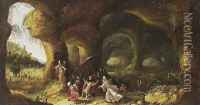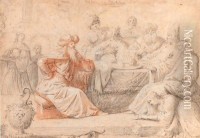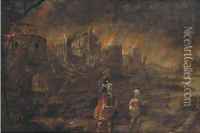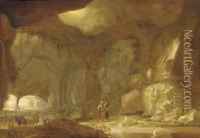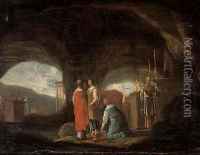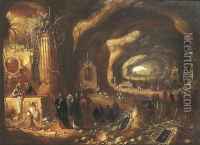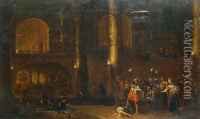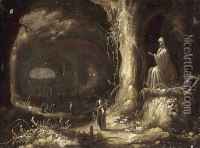Rombout Van Troyen Paintings
Rombout van Troyen was a Dutch Golden Age painter, known primarily for his landscape and genre scenes. Born around 1605, there is not much documented about his early life. He is believed to have been born in Amsterdam, where he also spent most of his artistic career.
Van Troyen was part of the thriving art scene in the Netherlands during the 17th century, a period that saw a great flourishing of arts and culture. He was a contemporary of artists like Rembrandt and Vermeer, although he did not achieve the same level of fame as some of his peers.
His works often depicted rural landscapes, and he had a particular talent for painting scenes with animals and figures. Van Troyen's landscapes are characterized by a sense of tranquility and the harmonious coexistence of humans and nature. He also painted biblical and mythological scenes, but these were less common in his oeuvre.
Rombout van Troyen's paintings are noted for their detailed and realistic portrayal of the Dutch countryside and its inhabitants. His use of light and shadow is subtle, and he had a strong grasp of atmospheric perspective, which gave depth to his landscapes.
Despite his skills and the quality of his work, van Troyen did not gain the same recognition as some of his contemporaries. As a result, information about his life is scarce, and only a limited number of his works have been clearly attributed to him. His death is believed to have occurred around 1655.
Today, Rombout van Troyen's paintings are held in various collections and museums, and he is recognized as a talented artist of the Dutch Golden Age, contributing to the rich tapestry of 17th-century Dutch art.
